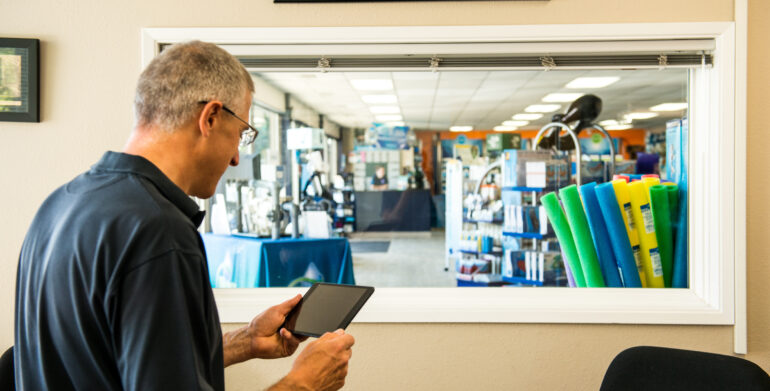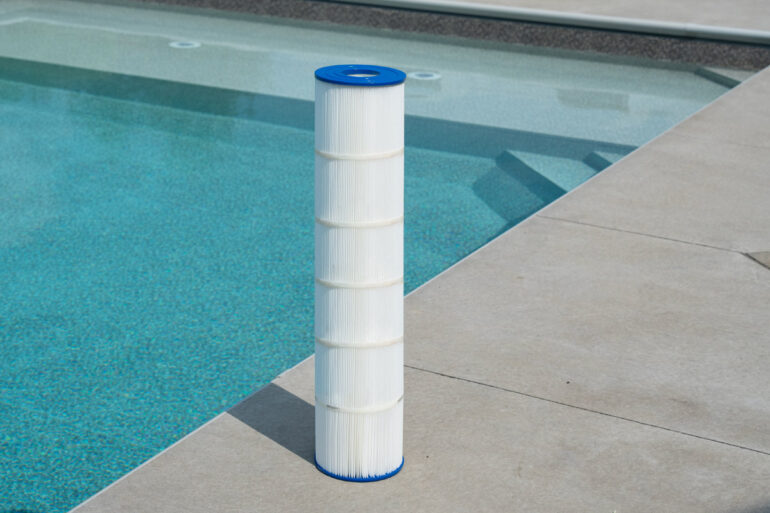Join the WEF-olution

The pool pump market is about to undergo a seismic shift. Starting July 19, 2021, all pump manufacturers will be required to comply with efficiency standards from the U.S. Department of Energy that apply to all new pumps.
The standards are largely based on requirements for weighted energy factor (WEF), a new metric used to calculate overall pump efficiency. This measurement provides a much more reliable way to communicate energy consumption, and all pump packaging will need to clearly display the pumps WEF rating.
The new rating system offers many advantages to consumers and pool professionals alike. To help you take full advantage of WEF, let’s take a look at what WEF is, why it matters and where the industry is headed as a result.
The Energy Factor
What, exactly, is WEF? To answer that, let’s forget about the “W” in the acronym for a moment.
All residential appliances carry an efficiency factor (EF), which shows how well it can translate input (electricity) into output. Broadly speaking, the higher the EF ratio, the more efficient the appliance.
Say your hair dryer needed the same amount of power as your refrigerator. That’s very little output for a high-energy cost, and the hair dryer would carry a low EF. Conversely, if your dishwasher could somehow run on the same power input as a 40-watt bulb, it would have an incredibly high EF.
Simple, right? It does get a bit trickier for pumps, however. Think about it: how do you compare a single-speed pump’s EF to that of a two-speed? If one product can deliver two different output levels, how do you make an apples-to-apples comparison? Do you take the number for the higher speed, or for the lower one?
Actually, you use both. And here is where we return to the “W” in weighted energy factor. WEF measures a pump’s efficiency at its different output points, multiplies them by a weighting factor formula and adds the pieces into one composite number. Two-speed pumps, for example, use an 80/20 ratio when combining low-speed and high-speed measurements.
Think of WEF like miles per gallon (mpg) for a car or seasonal energy efficiency ratio (SEER) for air conditioners. Both measure energy factor: Mpg rates efficiency on both city streets and highways; SEER rates efficiency across seasonal weather patterns. Then, those individual calculations are weighted accordingly and added together into one easy-to-compare number.
Using the Scale
We’ve arrived at maybe the most relevant question: What’s a good WEF score? And unfortunately, there’s no hard-and-fast answer. There’s no official ceiling to the WEF score, and the window between good and bad is wholly dependent on current technology.
Right now, most pumps fall in the 4–8 range. A particularly inefficient pump might hit a 2. The industry’s current high-water mark belongs to Hayward, with a pump clocking in at a whopping 12.9.
*Side note, for those who wondered “12.9 of WHAT?” WEF is a measurement of gallons per watt-hour (gal/Wh), which indicates the volume of water moving through the pump per hour of energy unit applied. More simply, it’s the amount of output per input (sound familiar?). You’ll rarely see the unit attached to the score, but it’s still worth a mention.
In general, variable-speed pumps have a higher WEF than their single-speed counterparts. To revisit the vehicle analogy, it’s the difference between a car with multiple engine gears and a car with only one. Unless there are other significant factors involved (vehicle size, towing capacity, etc.), the multigeared car will always adapt better to situational needs.
The same is true for pumps. Unless there’s a big difference in engine horsepower or product footprint, you’ll almost always see higher WEF from variable-speed pumps.
“But wait,” you ask. “Does that mean horsepower isn’t important anymore?”
Hold Your Horses
The short answer is no. The long answer is…well, let’s talk about horsepower.
Rated horsepower is the power output of a motor at predesigned voltage, frequency and rpm levels. Mathematically astute readers might notice a subtle connection between horsepower and EF. And unfortunately, as with EF, the industry conventions for measuring horsepower were in desperate need of standardization.
For years, pumps have measured their strength in terms of both horsepower and a nebulous “service factor.” If you’re confused, that’s OK — the industry was, too. It was a flawed system, and it spawned multiple incompatible methodologies for calculating a valid horsepower rating (full rate, max rate, etc.).
To eliminate the confusion, the new DOE regulations also require all pumps to display their total horsepower (THorsepower). THorsepower uses the same calculation as rated horsepower, with one important change: The service factor has been standardized. In the same way that WEF allowed us to compare EF more equally, THorsepower does the same for horsepower.
One other term you might see is hydraulic horsepower (HHorsepower), which is a pump’s horsepower at the point where water leaves the pump. And while HHorsepower can provide some insight in specific cases, it’s not quite as useful of a comparison point — and many of the variables get absorbed into the broader WEF formula anyway.
So now, finally, we can return to the long-awaited answer to the horsepower question: Yes, it’s absolutely still important — just in a slightly different way.
No Compromises
Let’s get one final WEF misconception out of the way: Energy efficient is not synonymous with power-limited. Whether we’re talking about vehicles, air conditioners or pool pumps, energy effectiveness is no longer locked into a zero-sum battle with strength. Today’s products deliver efficiency to complement performance — not sacrifice it.
So, what does all this mean for you? That’s the easy part. Selling DOE-compliant pumps is a win-win for both pool pros and pool owners. Sellers benefit from higher product value, and buyers benefit from increased energy savings (not to mention a longer product life span, reduced operation noise and more).
If your head is still spinning from all this EF and horsepower talk, that’s OK. Education will take time. But that’s exactly why it’s so important: Being proactive gives you a huge advantage. Instead of bemoaning a new standard, you can seize this opportunity to get ahead of the curve and become a WEF expert.
These regulations are coming, one way or another. Wouldn’t you rather be prepared for it?
*Sponsored Content brought to you by Hayward






